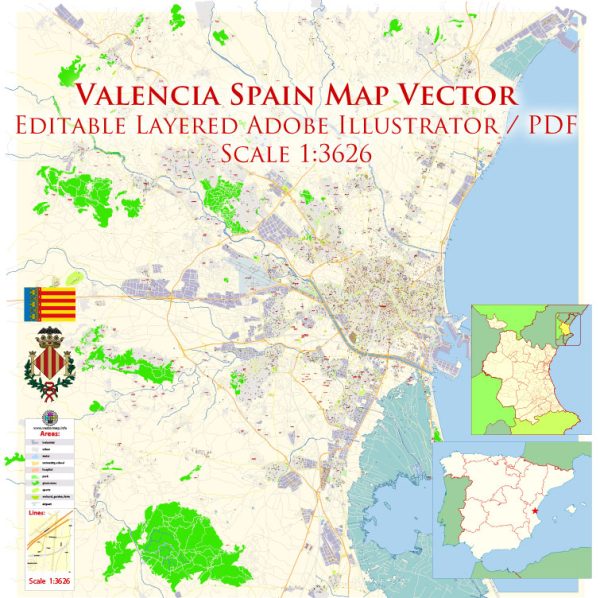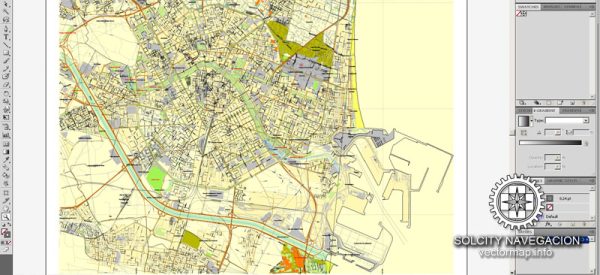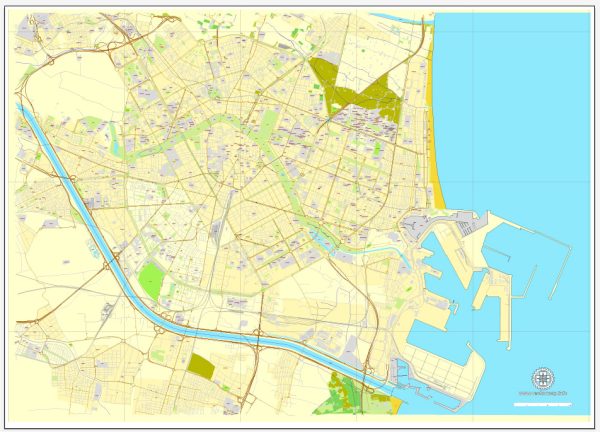Valencia, the third-largest city in Spain, has a rich history of urban development that reflects its strategic location, diverse cultural influences, and economic activities. Here is an overview of the key phases in the history of Valencia’s urban development:
- Roman Period (2nd Century BC – 5th Century AD):
- Valencia’s history dates back to Roman times when it was known as “Valentia Edetanorum.” The Romans established a colony around the 2nd century BC, and Valencia became an important agricultural and trade center.
- Roman Valencia featured a gridiron street layout, and remnants of Roman structures can still be seen in the city today.
- Visigothic and Moorish Rule (5th – 13th Centuries):
- After the fall of the Roman Empire, the Visigoths ruled Valencia until it was conquered by the Moors in 711 AD. Under Moorish rule, Valencia, known as Balansiya, experienced significant development in agriculture, trade, and culture.
- The city’s iconic Silk Exchange (La Lonja de la Seda) was built during this period and remains a UNESCO World Heritage site.
- Christian Reconquest and Golden Age (13th – 17th Centuries):
- The Christian Reconquest led by James I of Aragon in 1238 brought Valencia back under Christian rule. The city experienced a period of economic prosperity and cultural flourishing during the 15th and 16th centuries.
- The construction of the Valencia Cathedral, the Micalet Tower, and the expansion of the city walls occurred during this Golden Age.
- Economic Decline and 19th Century Modernization:
- The 17th and 18th centuries saw a decline in Valencia’s economic importance, partly due to the loss of territories and trade restrictions. However, in the 19th century, efforts were made to modernize the city.
- Urban planning initiatives included the demolition of medieval walls, opening new avenues, and the creation of public spaces. The construction of the North Station and the Central Market also took place during this period.
- Civil War and Post-War Reconstruction (20th Century):
- Valencia faced challenges during the Spanish Civil War (1936-1939), with the city supporting the Republican side. After the war, the Franco regime brought political and economic changes.
- Post-war reconstruction efforts included the development of new neighborhoods and infrastructure projects to accommodate the growing population.
- Contemporary Urban Development:
- In the latter half of the 20th century and into the 21st century, Valencia experienced significant urban growth and modernization. The Turia River was diverted to prevent flooding, and the former riverbed was transformed into the Turia Gardens, a vast green space in the heart of the city.
- The City of Arts and Sciences, a futuristic complex designed by architect Santiago Calatrava, has become an iconic symbol of Valencia’s commitment to modern architecture and cultural innovation.
- Cultural and Economic Hub:
- Today, Valencia is a dynamic cultural and economic hub. The city’s historic center, with its medieval architecture, coexists with modern developments, including contemporary art galleries, museums, and vibrant neighborhoods.
Valencia’s urban development is a tapestry woven from its diverse historical influences, from Roman and Moorish legacies to the Christian Reconquest and the challenges of modernization. The city’s ability to blend its rich history with contemporary innovation makes it a fascinating and dynamic urban center.




 Author: Kirill Shrayber, Ph.D.
Author: Kirill Shrayber, Ph.D.